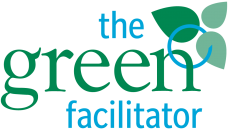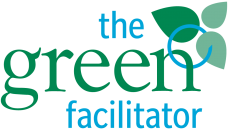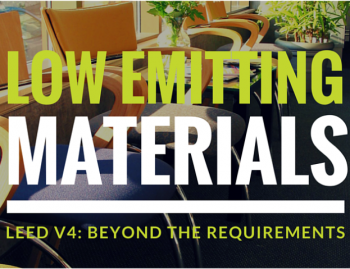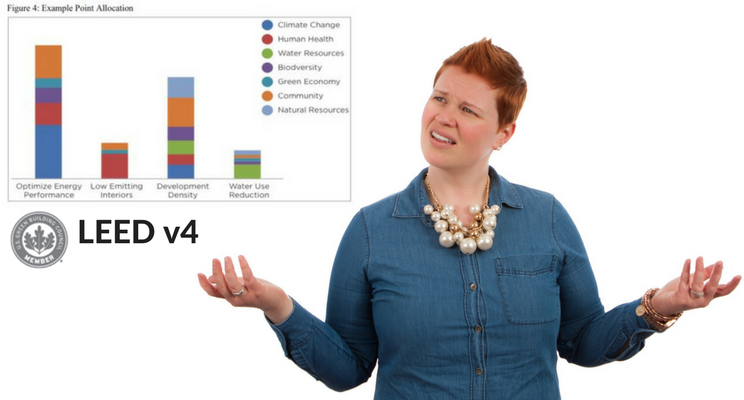
LEED® version 4 has finally emerged from the lab, and into the real world for field testing. As a LEEDUser Expert I'm seeing an increasing number of questions that I characterize as “What were they thinking?” As a member of the development team starting in 2009, and former Chair of the USGBC Indoor Environmental Quality Technical Advisory Group (EQ TAG), I’d like to offer my insight.
At the root of the answer is the 16 page document “LEED v4, Impact Category and Point Allocation Development Process” http://bit.ly/2j4ZWBz I don’t see a date in the document, but I downloaded to my computer on 11/16/2013. Citations below are from that document.
In order to both increase the rigor of LEED, and to more closely align it with triple bottom line impacts, USGBC defined 7 impact categories and weighted them according to the “critical question: ‘What should a LEED project accomplish?’”
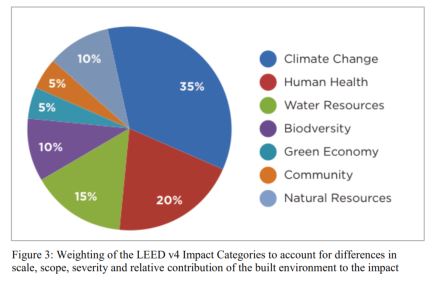
Once the 7 categories were weighted, USGBC devised a computer algorithm to statistically analyze the effectiveness of each credit against these criteria. Besides the obvious concern about putting a machine in charge of a systems thinking process, it presented a chicken and egg situation, since credits were not yet written and approved. It required an iterative process and some rules.
What would remain unchanged from LEED 2009 (version 3) was:
- 100 base credit points
- Thresholds for certification levels
- Inclusion of both of prerequisites and credits
n addition to maintaining the v3 rating system structure, credits had to be 1 point minimum, and had to round to whole numbers.
Every TAG had a wish list of credits. I am biased, but I believe the Indoor Environmental Quality category is unique in that it covers a range of issues with a requisite range of technical expertise: mechanical engineering, acoustics, lighting, industrial hygiene/public health, and psychology. So, we had a long wish list. I don’t remember how iterative the process was, but I do remember that we had a finite number of points assigned to us in which to allocate the EQ credits. There simply weren’t enough points to effectively cover all the issues we felt were important. We tried unsuccessfully to shift some credit to prerequisites, and suggested eliminating the point for LEED Accredited Professional and reassigning it to EQ (which I still contend is the right thing to do).
Our TAG also wanted to expand the focus from Indoor Environmental Quality to simply Environmental Quality, because the quality of the environment is not bounded by the walls of a building. Some of these ideas remained under the purview of other LEED categories, like outdoor lighting quality, and some did end up in other rating systems. For example Low Emitting Materials in LEED for Healthcare and LEED for Schools considers VOCs outside the building; and Occupant Comfort Surveys are part of Existing Buildings Operation + Maintenance, though not as the prerequisite we hoped for.
There was no way that this lengthy consensus process that included 6 public comment periods, a Technical Committee, a Market Advisory Committee, an Implementation Committee, a board Steering Committee, and a computer algorithm, was going to perfectly align with the goals it set out to achieve. Case in point, LEED v4 was originally slated to be named LEED 2012, and after approval, the launch was pushed back an additional year to November 1, 2016.
So when someone asks if a particular point allocation, or more rigorous reference standard is meant to disincentivize a particular strategy or entry into LEED as whole, I can resoundingly say “no.” However, LEED v4 is intended to reduce gimme points, better align with people-planet-and profit, and up the ante on the value of LEED certification.
I like to think of v4 as a beginning and not an end, and that premise is consistent with LEED development since its inception. From the USGBC development process report, “significant consideration went into the development of each impact category, and they will continue to evolve as we learn how the impact categories drive the rating system priorities.” In short, the proof is in the proverbial pudding, so please get in the kitchen and start breaking some eggs.
-Michelle Halle Stern, AIA, PE, LEED Fellow, President and Chief Co-Creator at The Green Facilitator, Inc.
